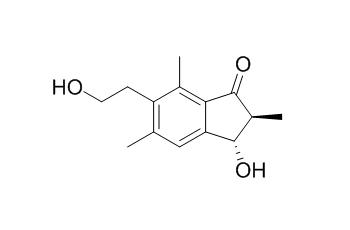Providing storage is as stated on the product vial and the vial is kept tightly sealed, the product can be stored for up to
24 months(2-8C).
Wherever possible, you should prepare and use solutions on the same day. However, if you need to make up stock solutions in advance, we recommend that you store the solution as aliquots in tightly sealed vials at -20C. Generally, these will be useable for up to two weeks. Before use, and prior to opening the vial we recommend that you allow your product to equilibrate to room temperature for at least 1 hour.
Need more advice on solubility, usage and handling? Please email to: service@chemfaces.com
The packaging of the product may have turned upside down during transportation, resulting in the natural compounds adhering to the neck or cap of the vial. take the vial out of its packaging and gently shake to let the compounds fall to the bottom of the vial. for liquid products, centrifuge at 200-500 RPM to gather the liquid at the bottom of the vial. try to avoid loss or contamination during handling.
J Nat Med. 2008 Oct;62(4):452-5.
Chemical and biologically active constituents of Pteris multifida.[Pubmed:
18553125 ]
METHODS AND RESULTS:
A new compound, 4-caffeoyl quinic acid 5-O-methyl ether (2), together with 12 known compounds--identified as (2R,3R)-pterosin L 3-O-beta-D-glucopyrannoside (3), beta-sitosterol beta-D-glucopyranoside (4), apigenin 7-O-beta-D-glucopyranoside (5), luteolin 7-O-beta-D-glucopyranoside (6), sucrose (7), caffeic acid (8), Pterosin C 3-O-beta-D-glucopyranoside (9), pteroside C (10), 4,5-dicaffeoyl quinic acid (11), pteroside A (12), wallichoside (13) and (2S)-5,7,3',5'-tetrahydroxyflavanone (14)--were isolated from Pteris multifida. The structure of the new compound was determined by means of physical, chemical and spectroscopic evidence. Compounds 5 and 6 were the main constituents of the plant, with yields of 0.19% and 0.16%, respectively. The cytotoxic activities of 2, 3, and 9-13 were evaluated against a human cell line (KB cells).
CONCLUSIONS:
Among the isolated compounds, Pterosin C 3-O-beta-D-glucopyrannoside (9) and 4,5-dicaffeoylquinic acid (11) showed a significant selective cytotoxicity (IC(50) 2.35 and 5.38, respectively), while moderate activity was observed for compound 2 (IC(50) 12.3). The chemosystematics of Pteris species is also discussed.



